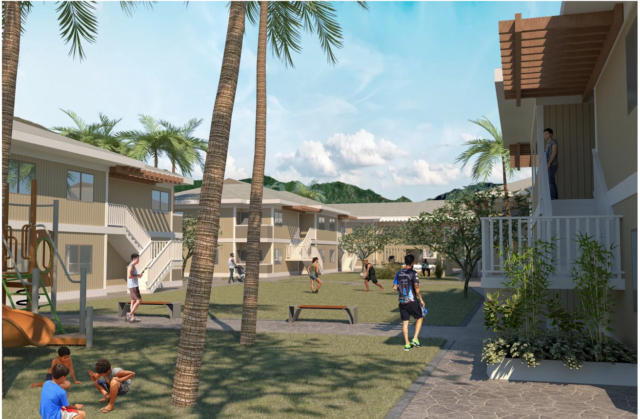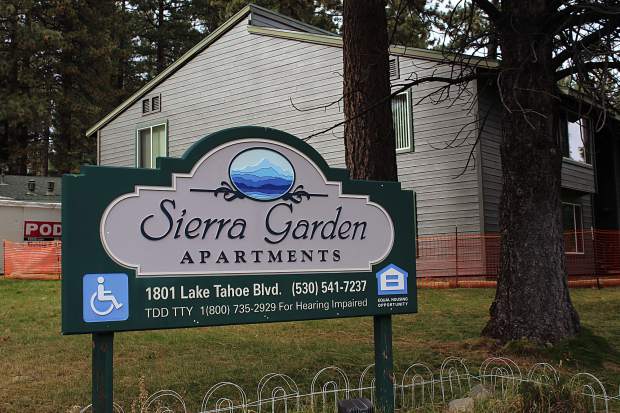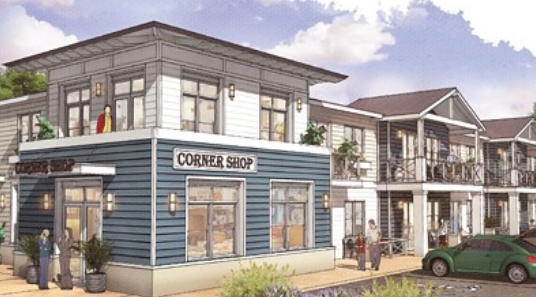Housing Advocates Might Love This Project, But The Neighbors Don’t
A 52-unit affordable housing project on private property in Maili has received most of the city approvals it needs, but it’s still generating friction between the developer and residents of the quiet neighborhood.
Hale Makana O Maili is expected to break ground before the end of this year, according to developer Kali Watson, president of the nonprofit Hawaii Community Development Board. The $23 million project would be open to households earning 30% to 60% of area median income.
It’s the type of project that affordable housing advocates often say is desperately needed on Oahu.
But that’s no solace to some of the residents on Kulaaupuni Street who still hope to stop it. They complain it was rushed through the Honolulu City Council, could make the area more flood-prone and overtax the neighborhood infrastructure.
Watson said the project is already fully financed with help from grants secured from the Hawaii Housing Finance and Development Corp. and the city, along with state housing tax credits.
The project still needs various building permits from the city, including approval for electrical work and construction.
Part of the conflict seems to stem from a lack of communication between the developer and residents.
Watson said the project has been in the planning phase for four years, and that he’s made at least two appearances at neighborhood board meetings and several other community meetings to gather input.
But several residents, including Kathy Kamada, said they didn’t know about it until they found surveyors walking around their yards in February.
“It’s not as if I read the minutes for neighborhood board meetings every day,” Kamada said.
In April, Watson wrote a six-page response letter to the area residents addressing some of their concerns. Regarding the neighborhood board presentations, Watson said he wasn’t required to provide advance notice.
Watson says he is committed to creating affordable housing units for local families.
The former head of the Department of Hawaiian Home Lands also led development of a similar housing project in Nanakuli called Hale Makana O Nanakuli, part of the long-planned Nanakuli Village Center that Watson hopes to finish by December.
Oahu will need over 26,000 additional housing units to meet demand by 2025, according to a 2015 study of housing demand by the state Department of Business, Economic Development and Tourism.
Construction Exemptions
Hale Makana O Maili would include five units for people making less than 30% of area median income, 10 units for people making less than 50%, and 36 units for those making less than 60%, plus a unit for an on-site property manager.
At the low end, a family of four would need to make less than $30,100 to qualify.
“Not many guys want to do these kinds of projects,” Watson said.
And not many neighborhoods of mostly single-family homes want an apartment complex in their midst.
“It’s not serving our interests,” resident Gary Shinsato said. “This street alone there’s already a lot of low-income housing.”
About a mile away at the other end of Kulaaupuni Street is a state funded, 78-unit transitional housing project, Villages of Maili, which is run by Catholic Charities of Hawaii and has begun providing services to homeless on Oahu’s Leeward Coast.
Shinsato said that he and the other residents along Kulaaupuni Street aren’t necessarily opposed to more affordable housing, but he takes issue with sorme of the exemptions the city granted the development.
The City Council approved a number of construction exemptions for the project in October, including waiving about $156,118 worth of application and review fees. It also allowed the developer to build the apartment complex in a residential zone, which typically limits the allowed amount of multi-family dwellings.
Resolution 18-206 also exempted Watson’s development from a city ordinance that would otherwise require the development to conform to development standards for concrete sidewalks and gutters.
Watson said he would put in an asphalt sidewalk fronting the housing project. Right now, Kulaaupuni Street just has dirt on both sides of the road.
The council’s resolution, which passed unanimously, also requires construction to start before October 2020.
Councilwoman Kymberly Pine included an amendment in a draft of the resolution that made clear that the development meets the minimum health and safety requirements to receive the exemptions under state law, according to minutes of the October City Council meeting.
Pine did not respond to a request for comment Thursday.
Shinsato said he wants the development scaled back to comply with the usual residential zoning restrictions, similar to four duplexes several lots over from Hale Makana O Maile. He also said the residents want better infrastructure, like gutters and sidewalks, if the development is built.
“That’s all the community is asking for,” he said.
The site is in Maili’s tsunami evacuation zone.
Watson said that the 71-stall parking lot would have an exit onto Milikami Street in case evacuation is required.
Neighbors are also concerned about traffic. They say the narrow Kulaaupuni Street could become congested once the apartments go up.
There could be an additional 439 vehicular trips daily coming out of Hale Makana O Maili, according to a study conducted by traffic consultants Fehr & Peers.
Watson said he wants to work with the community to place speed bumps along the street to slow down drivers.
‘Make It A Better Neighborhood’
While the project may appear to be on a fast track with the council-granted exemptions, it took him four years to compile reviews and studies to apply for those exemptions from the city, he said.
Watson noted that while the development would provide affordable housing, it’s not public housing.
“The idea is to make it a better neighborhood and a better place and ideally get some of the homeless people off the street,” Watson said.
The 2-acre parcel where Hale Makana O Maili is to be built was previously owned by Team Real Estate, a property management company based in Haleiwa and Makaha. Property documents show the sale was completed in 2018 for $2.25 million.
The property currently has 10 houses on it. Four of them on the mauka side would be demolished, and residents in three of them were given 90 days to vacate earlier this year, said Realtor Maria Abella. One tenant is still on the property looking for a place to move to.
Watson said he’s required by federal law to provide the tenants with financial assistance for their relocation.
The other six houses on the makai side of the property are supposed to be refurbished and then sold at market rate, according to the environmental assessment on the project. Those houses still have tenants living in them, like Megan and Iokepa Waialae, who moved in about a year ago.
The Waialaes hope they won’t have to move.
“We like it. Nobody bothers. It’s real low-key. We got a big yard,” Megan Waialae said. “If they give us the option to buy, we’d like that opportunity.”



